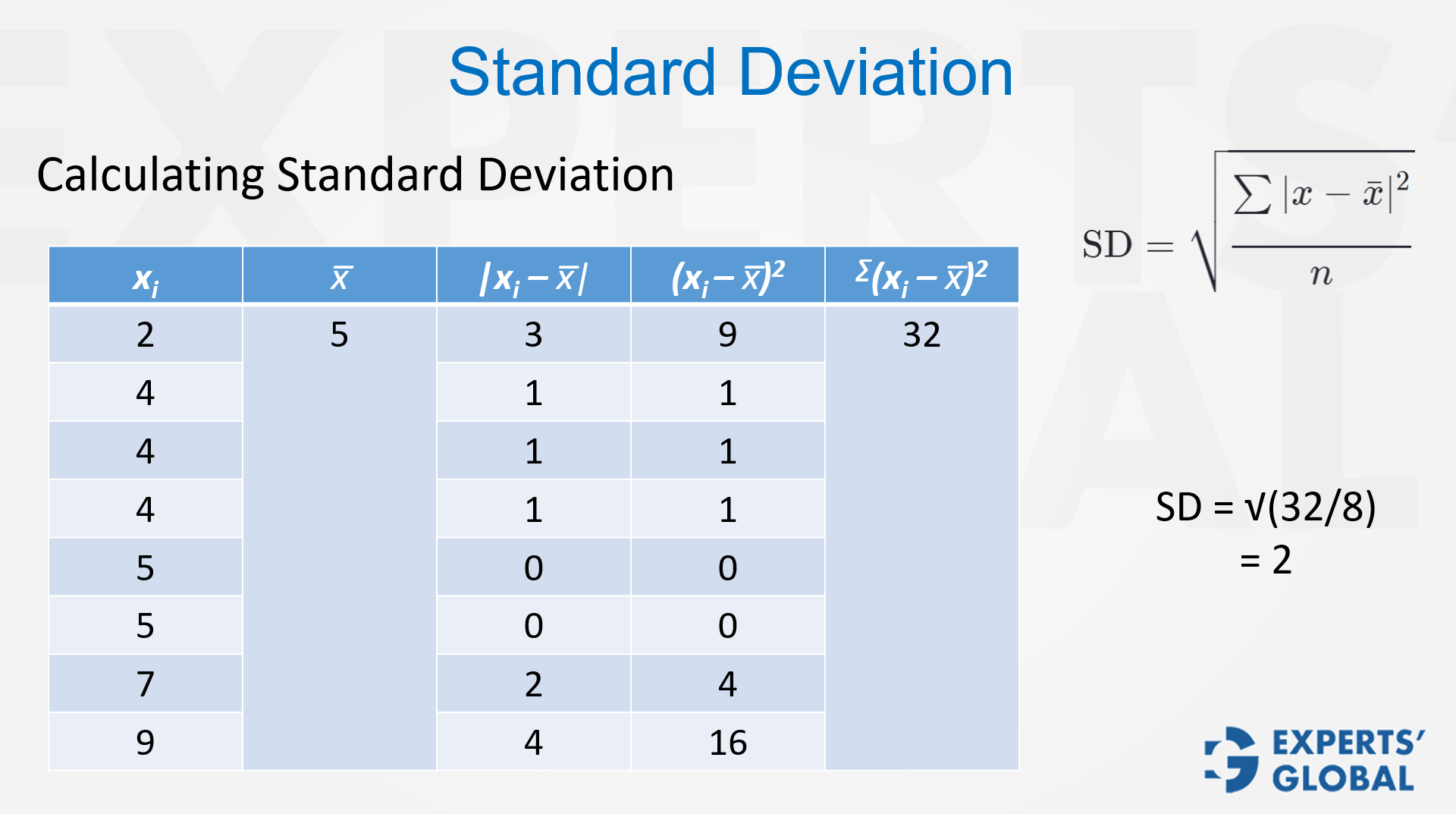Invest 30 seconds...
...for what may lead to a life altering association!
Help Line
- +91.8800.2828.00 (IND)
- 1030-1830 Hrs IST, Mon-Sat
- support@expertsglobal.com
...for what may lead to a life altering association!


Standard deviation describes how spread out a list is around its mean. Greater spread means higher standard deviation; tighter clustering means lower. Example: in 4, 5, 6 the values are close, so the standard deviation is low. In 1, 5, 9 it is higher overall.
Standard deviation is one of the most important measures of variability in statistics, and it often appears in GMAT Quantitative Reasoning as well as GMAT Data Insights questions. While the GMAT will not ask you to perform heavy calculations (and find the standard deviation for a dataset, per se), you must understand how standard deviation works and how it reacts to changes in a dataset. The test checks whether you can reason about the spread of data, not just calculate averages. For example, a list with a higher standard deviation indicates that values are more widely scattered from the mean, while a lower standard deviation means the values are tightly clustered. You must also know how simple changes – like adding, subtracting, multiplying, or dividing each element – impact the standard deviation. This conceptual clarity will prevent careless mistakes. Our GMAT mocks include carefully designed questions that test your understanding of this concept, and our GMAT preparation course provides detailed explanations that make learning both structured and intuitive.

Standard deviation measures how much the values in a list deviate from the arithmetic mean. A higher standard deviation means greater variation and wider scattering of values, while a lower standard deviation shows that values are closer to the mean.
The GMAT does not ask you to calculate a standard deviation. However, a broad sense of the process helps: find the mean, note deviations from the mean, square them, average them, then take a square root. This understanding lets you compare spreads, anticipate effects of shifts or scaling, avoid traps, and solve standard deviation questions confidently.

The GMAT does not require manual computation of standard deviation, but it tests your ability to apply these principles. For instance, if every element in a list is doubled, the standard deviation doubles. If the same constant is added to all values, the standard deviation remains unchanged. Recognizing such effects can save you precious time and ensure accuracy.
Did you know? Thousands of students reported great sync between our GMAT mocks and the real GMAT! Take the first GMAT mock, free!
Standard deviation whispers a simple truth about progress. Wild swings look dramatic, but real strength shows in steady, close-knit effort. In GMAT preparation, reduce your personal spread: consistent study hours, deliberate review, quiet practice under time. In MBA admissions, align your story so messages across essays, recommendations, and interviews do not wander. In life, aim for centered routines that honor curiosity, rest, and kindness. Outliers will appear, but let them teach rather than define you. Bring scattered days closer to purpose, and your outcomes grow predictable, calm, and strong. Master the spread, and you master the journey.